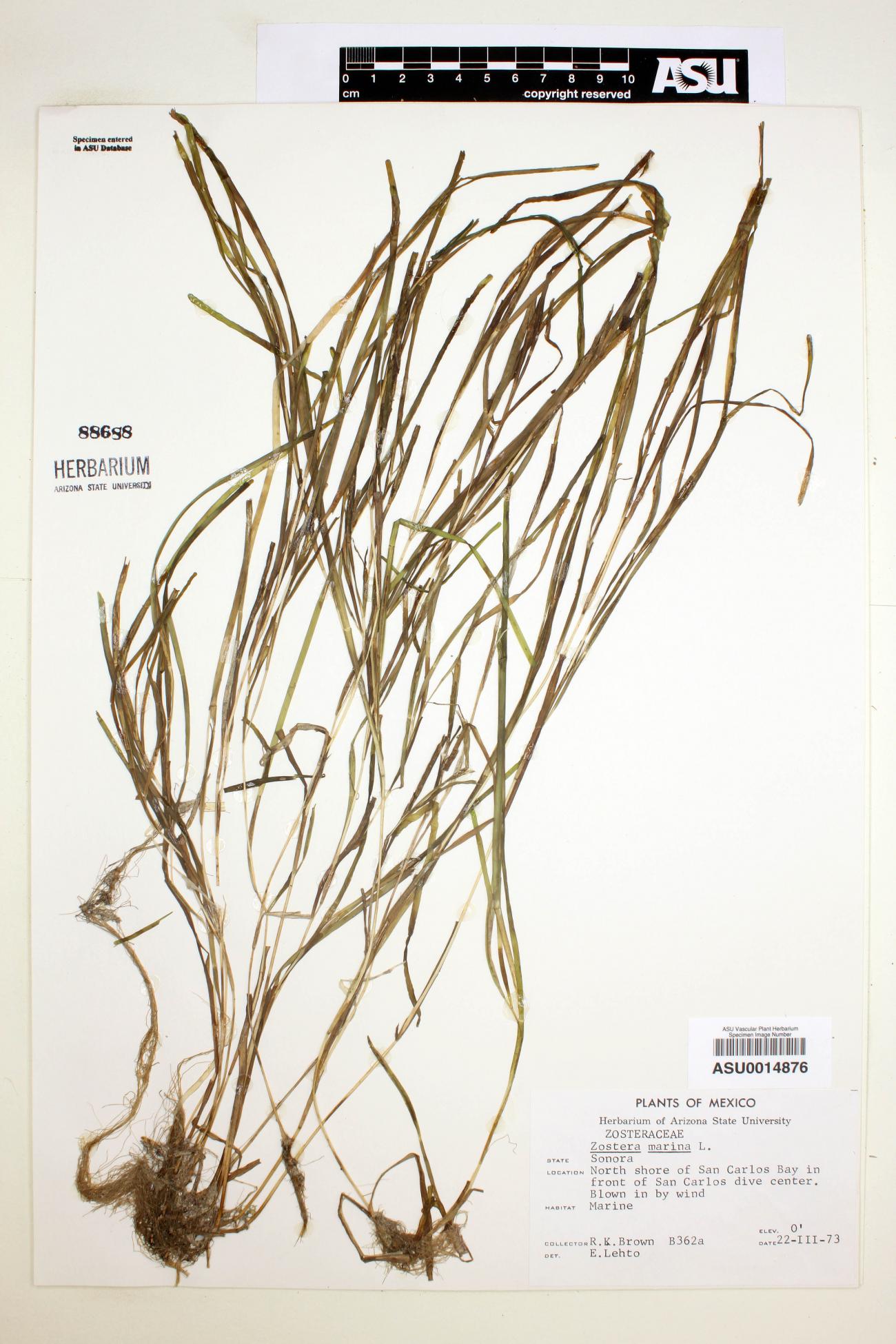
|
Zosteraceae |
|
|
Herbs, perennial, rarely annual, rhizomatous, caulescent; turions absent. Leaves alternate, submersed, sessile; sheath persisting longer than blade or decaying with age into bundles of woolly fibers, not leaving circular scar when shed, not ligulate, auriculate with scarious lobes; blade linear; intravaginal squamules scales, more than 2. Inflorescences axillary or terminal, spadices, surrounded by spathe, pedunculate; peduncle following fertilization not elongating, not spiraling. Flowers unisexual, staminate and pistillate on same plant or different plants; subtending bracts (retinacula) often present; perianth absent. Staminate flowers: stamens 1; anthers dehiscing longitudinally; pollen linear. Pistillate flowers: pistils1, not stipitate; ovules pendulous, orthotropous. Fruits achenelike. Seeds 1; embryo straight. Substantial differences occur in the literature concerning the morphology of the Zosteraceae, especially the reproductive structures. For a discussion of those differences, see C. den Hartog (1970). In summary, the flowers are unisexual, embedded in a spadix, and may or may not each be subtended by a bract or retinaculum. The spadix is subtended by a spathe, and it may or may not be retained within that spathe following fruit production. Spathes are produced on specialized branches (generative shoots), rather than occurring over the entire plant. The generative shoots may or may not contain normal vegetative leaves, but they do contain one or more spathes. The term inflorescence is ambiguous for Zosteraceae, and den Hartog used `rhipidium´ instead. In this treatment `inflorescence´ is used to include the spathe, spadix, and flowers.
|
|
This project was made possible in part by the Institute of Museum and Library Services [MG-70-19-0057-19].
Powered by Symbiota


